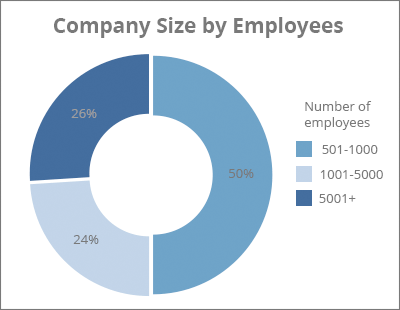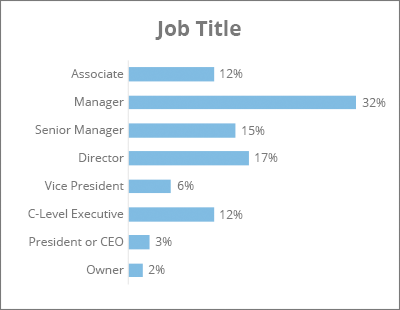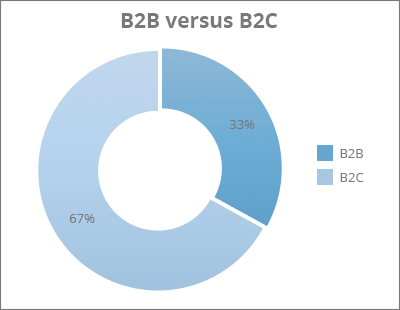Enterprise Marketing Survey 2016 [INSIGHT]
August 10, 2016
![]() The world of marketing at enterprise companies is both exciting and challenging – there are many decisions to make and options available when it comes to which marketing channels to prioritize, which technology platforms to utilize, and when to hire an agency for support.
The world of marketing at enterprise companies is both exciting and challenging – there are many decisions to make and options available when it comes to which marketing channels to prioritize, which technology platforms to utilize, and when to hire an agency for support.
We partnered with agency R2integrated (R2i) on a survey of 500 marketers to understand their priorities and how they work with agencies and technology solutions.
Key Findings
- Enterprises rely on multi-channel campaigns, using an average of eight different marketing channels
- TV advertising is a key priority for enterprise marketers and the largest opportunity for agencies
- Agencies are in high demand – particularly ones that specialize
- Virtually all enterprise marketers (99%) use at least one marketing software tool
Recommendations to Marketers
- Centralize command of your marketing campaigns under either a lead agency or strong in-house leadership. Look to specialists to supplement those efforts.
- Do not discount traditional methods such as TV advertising. In addition, ensure you have the digital channels in place to capture the online demand that TV ads generate.
- Invest in analytics to optimize your campaigns and track return on investment.
DATA INSIGHTS
We surveyed 500 respondents who work in a marketing role at companies with at least 500 employees. About half come from companies with 1000+ employees. 88% are manager level or higher. More demographics can be found at the bottom of this page.
Enterprises use multi-channel campaigns
Our survey began with exploring which channels are most popular for enterprise marketers and the breadth of their marketing programs.
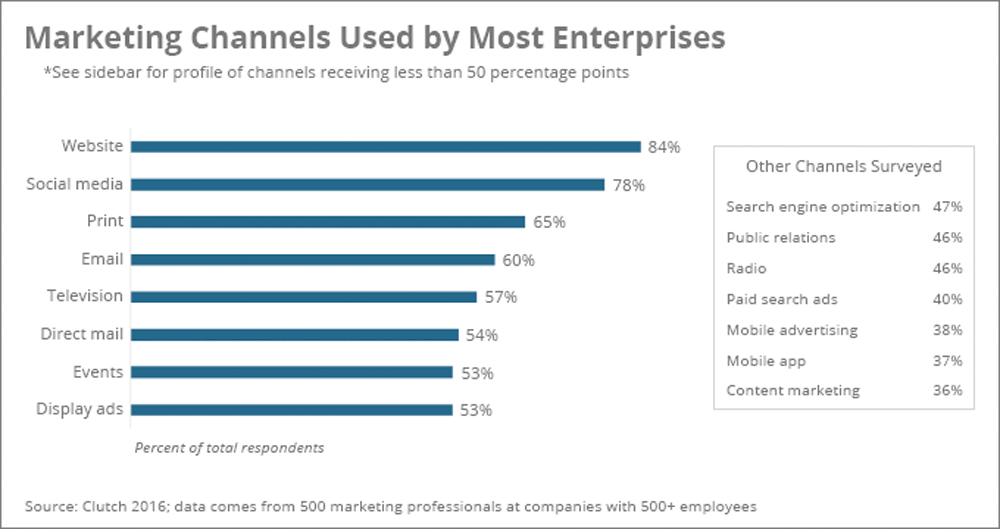
On average, enterprises use eight different channels to market their businesses. Most popular mediums are website, social media, and print.
As the consumer decision journey (link is external) becomes increasingly complex, marketers must create sophisticated, multichannel campaigns to attract and retain customers in all different stages. It is likely that our study does not even capture all that the modern enterprise marketer works on today.
This new, complex marketing landscape poses a challenge for CMOs to develop cohesive campaigns with a consistent brand image and message across platforms. In order to do this well, enterprises should have either strong in-house marketing leadership or a primary agency at the center. Either of these central bodies can then maintain control and measurement over specialized agencies that take pieces of the company’s marketing campaigns.
Differences in business and consumer audiences
When segmenting B2B (business-to-business) versus B2C (business-to-consumer) respondents, we found the following distinctions in how marketers focus their campaigns:
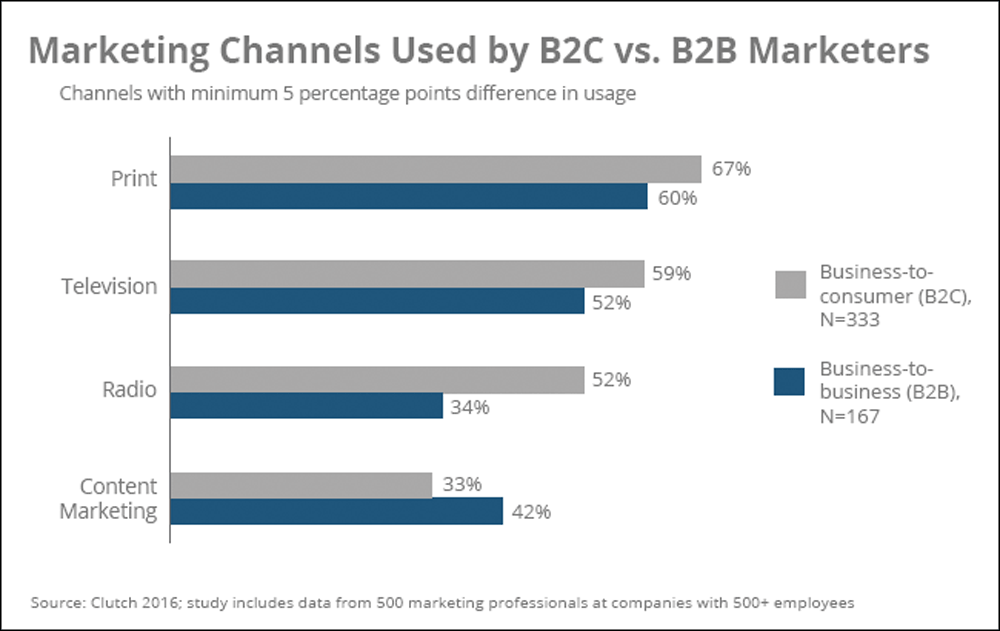
Traditional channels like print, TV, and radio are more common among B2C marketers, whereas content marketing is more popular in B2B.
There are distinctions in the type of buyer making a consumer purchase as an individual versus making a significant business purchase on behalf of a company. The B2B buying and subsequent sales cycle is complex and typically longer over time which requires a long-term focus on nurturing the buyer across more touchpoints and really capitalizing on the moments that matter. To make an impact marketers must be laser focused on targeting their message within the channels that will be most effective at reaching and convincing their buyer type.
TV emerges as a priority channel for 2016
Given the broad nature of marketing campaigns today, we wanted to narrow in on near-term priorities to see where enterprises are focusing efforts. We asked marketers, “What marketing channels will your company prioritize over the next 6-12 months? (Rank top three.)”

TV emerged as the most common number-one ranking, selected by 22% of companies.
The top three responses above are the same across both B2B and B2C respondents: TV, social media, and website.
Why is TV so important?
Marketers continue to invest in TV, despite conflicting advice to move towards digital; in a 2016 survey by RSW/US, marketers expressed that their agencies often downplay the importance of traditional media (link is external) and put too much weight on new media.
TV remains one of the most trusted and actionable forms of advertising, according to a 2015 Nielsen study. Globally, 63% of consumers say they completely or somewhat trust TV ads (link is external) — the highest level of trust in any paid advertising format surveyed, both online and offline. In addition, 69% say they always or sometimes take action on TV ads.
TV can be very effective at making a brand connection with consumers and reaching a wide audience. In our survey, we found that brand awareness was the top strategic priority for over one-third of marketers:
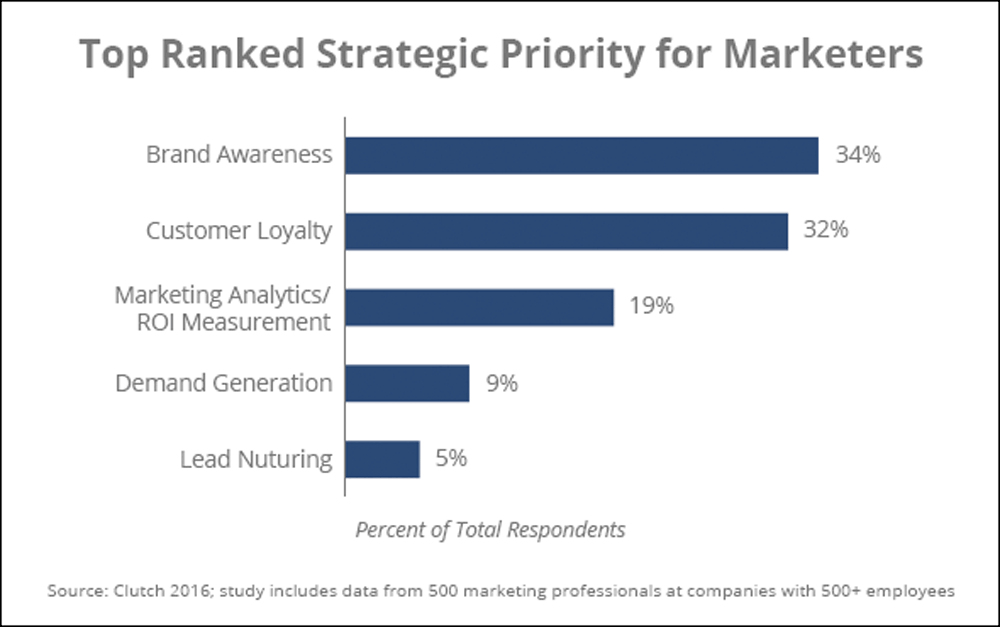
Brand awareness is a strong benefit of TV advertising, so these findings are likely correlated. TV can drive the brand message at the root of a multi-channel strategy.
Are marketers taking full advantage of TV?
It is essential that TV advertisers round out their campaigns with digital channels such as search and social that can fully capture all of the online traffic that is triggered by TV ads. Just 47% of companies report using search engine optimization, the remaining losing out on a piece of that demand.
It is crucial that businesses both plan for online traffic following TV ads and use digital channels to reinforce their message.
The good news is that 84% of enterprise companies have a website and 78% use social media. But, it is not clear whether those companies that advertise on TV are truly integrating the customer experience across all the platforms where they meet customers. When done correctly, this integration will reinforce the message and maximize the value companies receive from TV advertising.
Demand for TV ad agency services
Not surprisingly, enterprises are looking to agencies for help with their TV advertising, among other services:
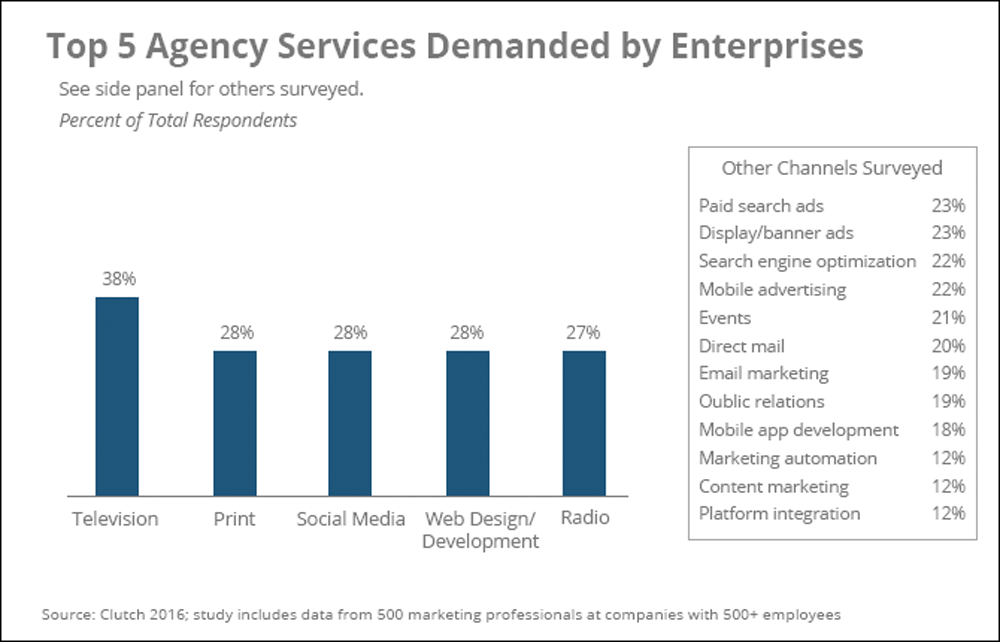
We found that 38% hire an agency for TV advertising. This is by far the most popular service for which to hire an agency – 10 percentage points higher than each of the next three most popular (print, social media, and web design/development).
This is likely correlated with the large number of companies that invest in TV advertising – but even more, TV ads require a level of sophistication involving specific skills and high-end equipment that is often best left in the hands of specialists.
Additionally, the world of TV advertising is evolving quickly, and advertising agencies often have an edge over in-house teams given their close-up view of the industry and experience with many different clients.
In a recent Ad Age article (link is external), Brad Jakeman, president of the global beverage group at PepsiCo, explained how the pace of content production has evolved, creating new challenges.
“For a brand like Pepsi, it was once sufficient for us to produce four pieces of content a year—mainly TV—and we could spend about six to eight months developing that one piece of content and spend $1 million on each piece of film. Now, that four pieces has turned into 4,000; eight months has changed to eight days and eight hours; and budgets have not gone up,” said Jakeman.
Enterprises that face these pressures yet still want to tap into the benefits of TV advertising can turn to experienced ad agencies to manage this complex piece of their marketing program.
Enterprises turn to agency resources
Our study also addressed how enterprise companies work with agencies more broadly and how those relationships are changing.
Quantity of agencies vs. in-house resources
We found that 84% of companies hire at least one agency for a marketing or advertising service—and more commonly work with 2 or 3 agencies.

This is not surprising given all that a CMO hopes to do today, with the diverse technological skills and knowledge required for sophisticated multi-channel campaigns targeting multiple audiences. Given this dynamic, both internal and external resources are a necessity for businesses of this size.
We also looked at the size of internal marketing teams for perspective.
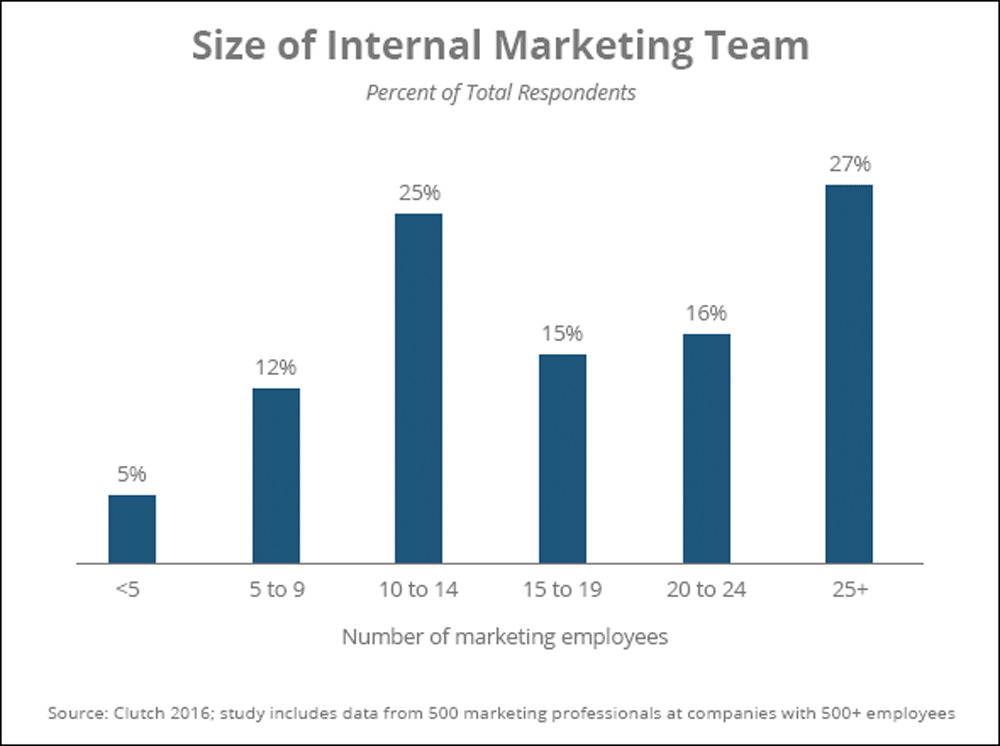
A model where the in-house team implements campaigns and builds up knowledge yet leans on the expertise of outside specialists or agencies seems to be common. Marketing teams can fill in the gaps with agencies that best suit their business needs.
Specialized vs. Full-Service Agencies
At the root of the decision regarding what type of external resource a company should hire is whether they prefer to work with a large full-service firm or a best-of-breed specialist firm.
At one end of the spectrum, massive agencies and holding companies continue to grow in territory—Ad Age’s Agency Report 2016 states that the ‘Big Five’ agencies completed over 100 acquisitions and investments in 2015.
Mid-sized, independent, full-service agencies for their part are also able to capture enterprise clientele by positioning themselves as more nimble and personal, or with a greater focus, for example a ‘digital agency.’
And, smaller specialist agencies can also be very successful with enterprise brands, especially in areas that require deep technical expertise such as custom mobile app development. There are even small consultants in niches such as company and product naming that dominate the enterprise space and act as subcontractors to larger branding firms.
Both full-service and specialized agencies have their pros and cons. Over the life of a business, it is common to cycle between a preference toward one or the other.
To evaluate the current temperature on how businesses feel about specialized vs. full-service agencies, we asked marketers the question, “In 2016 and beyond, do you predict your company will hire additional, specialized agencies, or consolidate to fewer, full-service agencies?”
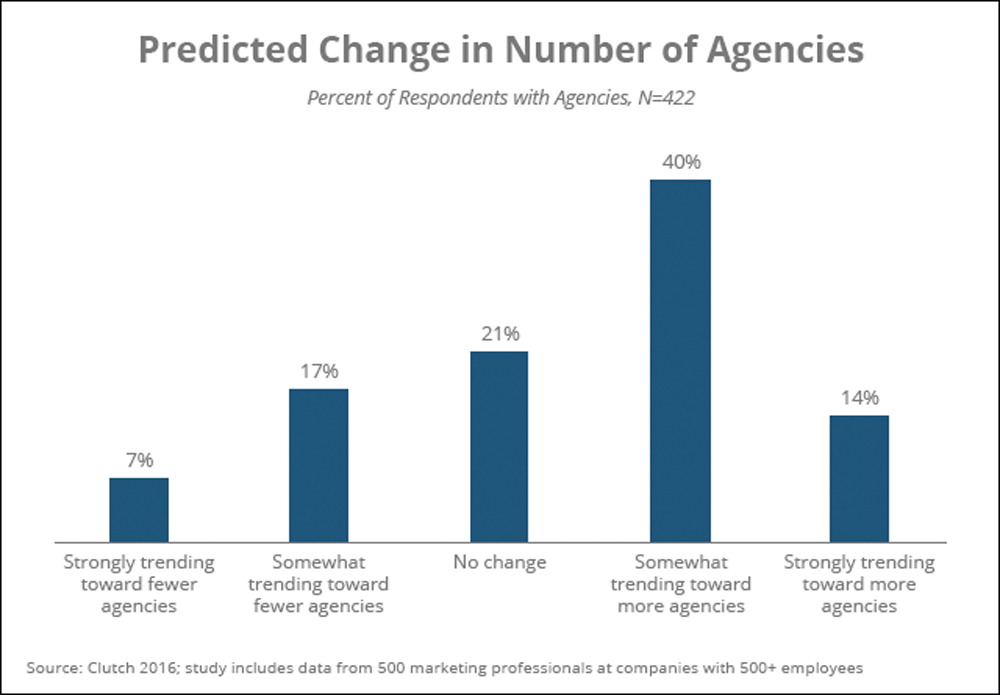
54% of marketers in our study say their companies are strongly or somewhat trending toward hiring additional, specialized agencies. Just 24% say the opposite: their company is trending toward fewer, full-service agencies.
The trend towards specialization is likely indicative of all the new areas of marketing and technology that are emerging. It is a lot for an in-house team or any one agency to keep up with.
Agencies of Record
Traditionally, Agencies of Record (AOR) were common in the enterprise space.
Some have observed or predicted that this model is going away in favor of more flexible, project-based arrangements. This is likely explained by:
- Specialized marketing technologies or niche industries require deep knowledge that a full-service firm may not address.
- There is higher agency competition in the market and businesses have more options.
However, in our survey, 77% of companies indicated that they have an AOR.
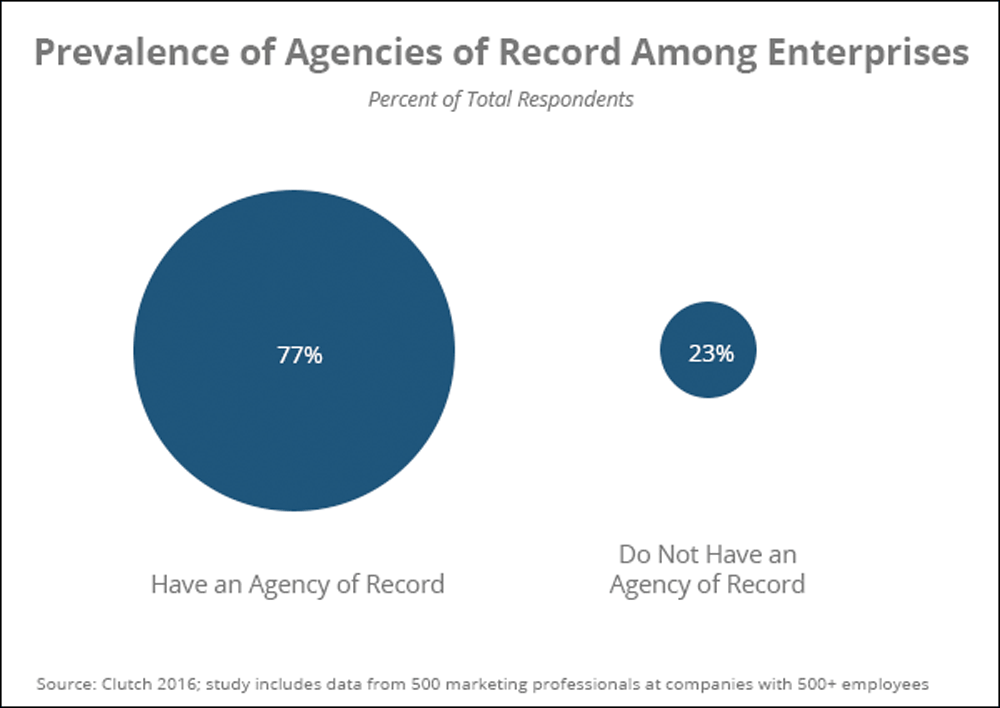
We suspect that while the title AOR might still be used, the AOR today is more flexible than its predecessor. The traditional AOR opportunity is becoming more and more rare.
The modern AOR model is likely that of a “lead agency”, where one central AOR works closely with a company over the long term so that it understands the company’s strategy and history. Specialist sub-agencies overseen by the AOR then complement the AOR’s capabilities.

For enterprises, relationships with agencies seem to be a necessity for their marketing programs.
However, with any business relationship there are challenges. We asked marketers, “What is the biggest challenge of working with an outside agency?”
Top challenges working with agencies
Three responses emerged above the rest: communication, limited understanding of company strategy and history, and project management.
Although these difficulties may stem from a lack of “soft” client skills as opposed to a lack of technical or creative skills, there are still learned practices and policies that agencies can use to mitigate these challenges.
In any case, our survey shows that enterprises find agencies valuable on the whole, given that most hire between one and three agencies, and the majority plan to hire even more in the future.
Enterprise marketers rely on software
In addition to agency resources, marketers turn to technology products to support their campaigns.
Virtually all marketers use at least one type of marketing software.
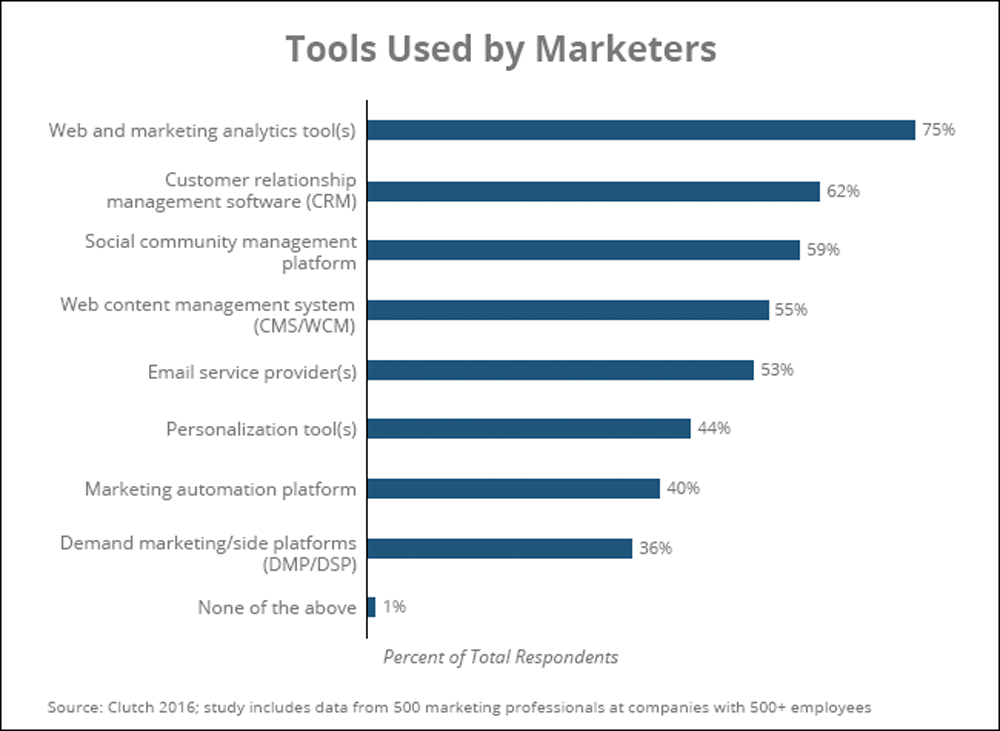
The most common tool is analytics software, used by 75% of enterprises.
Analytics is critical for optimizing and tracking the success of marketing campaigns, especially digital marketing. It is a little surprising even that a quarter of enterprises do not use it.
As a follow up, we asked which tool their company relies on most heavily for marketing execution.
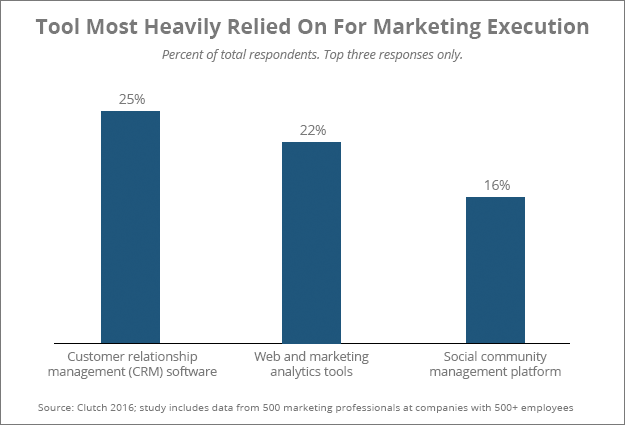
Customer Relationship Management (CRM) software is relied on most by 1 in 4 marketers, followed closely by analytics software.
CRM tools are critical in managing the leads that the business generates through all channels. At the end of the day, analytics and CRM software can be useful no matter which marketing channels your company uses.
Conclusion
Enterprise marketing is an exciting space to be in with all of the technologies to learn and channels to explore. Marketing teams have plenty of options at their disposal whether it’s which channels to invest in, which agencies to hire, or which technology solutions to use. The challenge will be orchestrating the right mix of these resources as the industry continues to surge forward with innovation.

